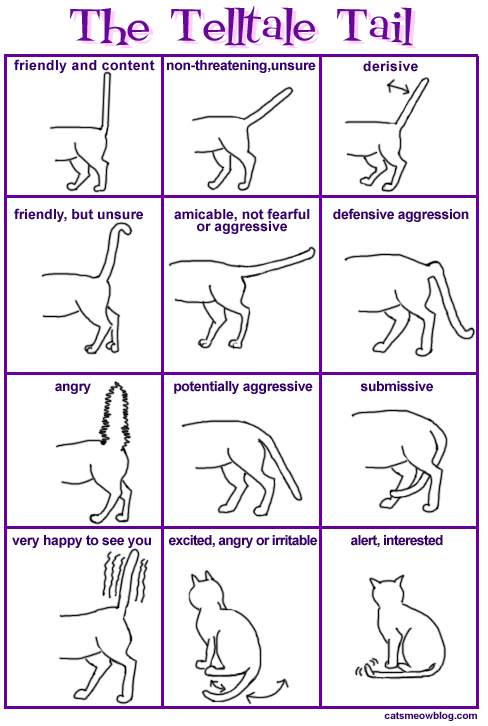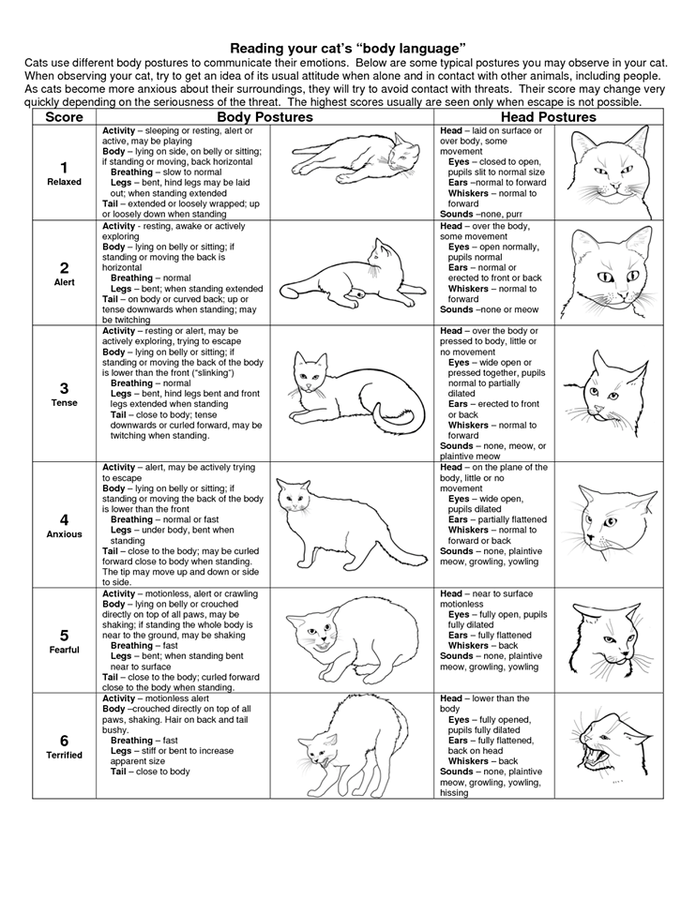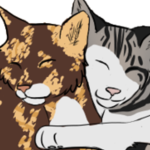|
|
|
GIL:  |
|
|
Post by Dreamer on Sept 2, 2017 15:47:05 GMT
Aging and Development
Like all creatures, cats have a distinct development cycle which begins at birth.  Essential Guide to Cats Essential Guide to Cats1st Moon: Kittens are born both blind and deaf, and tiny and unable to fend for themselves. They do not open their eyes until between 7-10 days, but they still do not see very well. During the second half of the moon, kitten's ears will begin to open and stand up, but hearing is still developing. Around the end of the moon the kittens will start to walk, and although they may be moving around quite quickly, their coordination will still need work. Human equivalent 0-2 years. 2nd moon: At this point kittens are starting to be their active selves, balls of pure energy who can often be a pawful for the queens to care for. Their teeth have begun growing in, and as a result mothers will begun weaning their kits. By the end of the month the kit is likely fully weaned, and able to eat soft prey. Human equivalent 2-4 years. 3rd moon: By the beginning of this moon, the kits' eyes will be their adult color. At this point socialization with the rest of the clan will intensify, and likely education could begin. Human equivalent 4-6 years. Moons 4-6: These are the prime times for learning, growing and developing in the kit's life. The will learn about clan culture and law, and how to interact with other cats. Human equivalent 6-12 years. By International Cat CareThis chart helps explain the aging of cats. Because of this chart, we put retirement to the elders den at 100 moons. Even at this age technically cats are not on the elderly side, but due to their life style warriors would be worn and battered. Because of this chart, the aging for the ranks is as such: Kit: 0-6 moons Apprentice: 6-16 moons Warrior: 12-85ish moons Heir: 10 moons til death of prior monarch Monarch/Consort: Pair ascends when one of the prior ruing pair dies Herbalist/Healer/Priest(ess) Apprentice: 10 moons on average at start Head Herbalist/Healer/Priest(ess): 16-20 moons on average till death Deputy/Second: 40-50 moons on average at start Leader: 50-60 moons on average at start Elders 100 moons-Death (can retire earlier due to injury if they wish, can retire later if they are still healthy and well) |
|
|
|
|
GIL:  |
|
|
Post by Dreamer on Sept 2, 2017 15:47:46 GMT
Body LanguageCats are primarily non-verbal communicators, and only involved the loud verbal responses because of human interaction. As such, it is important to understand non-verbal communication cues so as to portray cats accurately in your writing. - Tail- Cats tails are generally a very good way to tell a cat's mood.  A friendly cat usually holds their tail high but relaxed, waving it gently, or if excited very quickly. If a cat is interested in something, such as prey or toys, it's tail often twitches, or lashes quickly depending on the level of excitement. An aggressive or fearful tail is often hooked at where it meets the spine with tip pointing down, or in a vertical position, but always the fur is fluffed out A submissive tail is one which is curled under the body. - Body-  By The Cat SiteFriendly cats greet each other with headbutts and rubbing cheeks and bodies together, which spreads scent, and allows the cats to feel each other with their whiskers. Often cats who are on good terms with each other will groom each other or cuddle in piles for protection and warmth. At rest they are usually in relaxed fluid postures where they are at sprawled out sleeping or merely chilling. Their eyes can half close, and the second membrane within their eyes can sometimes partially cover them, giving the eyes a glazed look. Cats who have become intent or excited by something such as a moving object will hold a perfectly still position, with the only thing moving being their tail, until they use their tensed muscles to leap or run forward. This is when their pupils become huge and round as they zero in on their target. Cats who are afraid will often bunch up on themselves, either in a small mound on the ground with their backs arched, or so arched that their spines can look like an upside down U. Usually these cats avoid direct contact and will tilt their heads to side-eye each other, stepping lightly and awkwardly as they have risen onto their toes. Any movement could startle them, and send them into a leap straight up. Defensive cats are usually lower to the ground, protecting themselves from another cat, and occasionally tucking their tails underneath them submissively. Aggression manifests in very similar ways to fear and defensiveness, but it is all more assertive. An aggressive cat will advance instead of backing down, and arch up and try to appear the biggest by fluffing out their fur. Most of the time cats do not engage in epic battles, but quick brutal exchanges of blows in the midst of long screaming and hissing matches as one cat attempts to convince the other to just back down and give up. - Ears-  |
|
|
|
|
GIL:  |
|
|
Post by Dreamer on Sept 2, 2017 15:53:55 GMT
Social Behavior
While most people see cats as less social animals, it is very important to understand that while they are not naturally pack animals, they can still form social groups in the forms of colonies where resources are available. That said, due to anthropomorphism, the clans are different than your typical colony.
Hierarchy
Unlike feral cats, the clans have their own specific hierarchy, but even echoes of it can be seen in the clan system. Feral colonies do not have any sort of system such as wolves, and while there is usually one main tom in the colony who has the mating priviledges, other cats seem to have the hierarchy in their own specific areas. When it comes to the clans this translates into those cats who are most skilled or most involved in certain areas of life (hunting, fighting, gathering, camp protection/upkeep) will be the ones which most other cats defer to, as they are the experts in their areas.
Being a Mother
Female cats react very interestingly, and although we are forgoing the concept of heat (due to wanting to be able to have kits whenever we want, since most sensible cats only are in heat between spring and fall), we still want to point out that mother cats are not the simple lovey-dovey sweet pushovers.
Pregnant and nursing she-cats are fiercely protective of their kittens, and will often hide them away for most of the first month after birth. At birth, occasionally other females may help in the position of a "midwife" as they help stimulate the she-cats body to give birth, break the amniotic sacks of kittens and lick them until they breathe. Queens usually allow females around, but they are instantly wary of toms, or at the least very nervous, and will watch the tom very carefully and react harsher than they normally might. This is due to in the wild toms will occasionally eat kits in order to send the female back into heat and pass on his own genes. The clans of course are more civilized, but some instinctual holdover usually forced toms who wish to enter the nursery to mix their scent with those of other queens, as well as soothing herbs like lavender.
Once the kits are weened, all the mothers tend to share the kit-rearing and caring, encouraging the kits to practice and play and hunt bugs.
Social Ties
Since in the wild the fathers are less present and males and females mostly mix only when mating, social bonds usually occur between the mother and her kits, and siblings are more likely to have close ties with one another than with other cats. In the clans of course, this bond can extend to the father if he actively involves himself in their lives, but this does not always occur. Often clowders (groups of she-cats with kits) form around a mother and her daughters and other extended family. With the clan of course, everyone is some form of family.
Within feral colonies an interesting phenomena has been known to occur. Cats will single out one specific cat, and they will be inseparable comrades. It is with their pairs that cats will share the most physical attention, such as intensive grooming and cuddling. While this can occur with mates in the clans, sometimes there will be platonic pairs which simply find comfort in one specific cats presence, such as a sibling or a good friend, which is why these pairs are not gender specific in any way.
Diurnal or Nocturnal?
While most cats tend to be active from later afternoon until early morning, it really depends on the habitat and availability of food. In our case, Moorclan spreads its patrols as evenly as possible throughout the day, taking turns in night and day shifts. This is to maximize their ability to catch as much prey as possible in their harsh environment, and without fear of humans, they need not worry about being seen in daylight. Pineclan has heavy periods of activity around Dawn, early morning, and late afternoon dusk. They wish to be able to train their apprentices in partial daylight, but also appreciate the anonymity of the early and late hours of the day to hide from humans. Firthclan follows a similar schedule, with two sleeping shifts one around midnight and one around midday.
|
|









